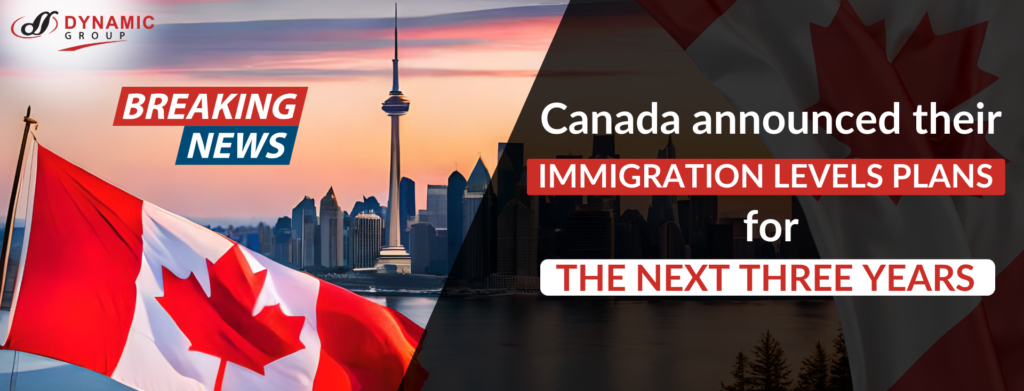An immigrant’s guide to buying a car
Now that you’re situated in Canada, you wish to buy a car.
Car shopping can be intimidating. Where can I find a good car? How can I tell if it’s alright? Should I start negotiating? How do I change the ownership to my name?
This article simplifies these steps. After reading this, you would realise that buying a car isn’t so daunting after all. Therefore, conducting research and comparison shopping will help you choose a car you like.
How to buy a car in Canada
It takes four steps to buy a car in Canada:
- Get a licence
- Find a car
- Obtain car insurance
- Register the car
Get a driver’s licence.
To own a car, you must first obtain a valid driver’s licence from your province or region. This licence allows you to drive everywhere in Canada.
If you have a valid foreign licence, you can probably drive in Canada for a short time. Remember that each province and territory has its own restrictions, so check their websites for details. Depending on your province or territory, you may need to pass a written exam on traffic laws and one or two driving exams.
Visit your province or territory’s transportation department website to learn more about how to receive a Canadian driver’s licence:
- Alberta
- British Columbia
- Manitoba
- Newfoundland and Labrador
- Northwest Territories
- Nova Scotia
- Nunavut
- Ontario
- Prince Edward Island
- Quebec
- Saskatchewan
- Yukon
Finding the car
Research:
During your research, you should ask questions like:
What is my budget?
You’ll also need additional money for routine and unplanned maintenance, as well as gas. In Canada, it’s typical to buy 4 winter tires to aid manage the ice and snowy roads between October and April. Remember that you will need to pay tax and possibly additional costs when purchasing the car. Even if you buy a used car from a private seller, you may have to pay sales tax.
Canada mandates monthly car insurance.
What do I need the car for?
Buying a sedan may be ideal if you merely need to get around. If you have a family, consider an SUV or van.
Do I want a manual or automatic car? Canadians prefer automatic cars, but manuals are available as well. Manual automobiles are cheaper than automatics
New or used car?
New cars provide you peace of mind and the joy of being the first owner. They’re more expensive and degrade faster than used cars. If you plan to resell the car, consider this. Canada has many used automobiles available, some nearly new.
My shortlist includes which cars?
It’s easier to look for cars if you’ve narrowed down your preferences.
Canada’s car-buying resources
Many websites help you find cars to inspect and test-drive.
Examples include:
Google: Google “car dealers” to find the nearest ones in Canada. You may read Google reviews from other buyers about these dealers.
Kijiji: eBay owns Kijiji, a marketplace for car dealers and private sellers. Private sellers can be cheaper than dealerships because they don’t have as many expenses (e.g., marketing, payroll, insurance, rent, etc). However, private sellers may not reveal the car’s full history.
Facebook Marketplace: It is another place to find private-seller used vehicles.
Below are some of the websites that list automobiles for sale:
- Autotrader.ca
- Canadadrives.ca
- Cardoor.ca
- Cargurus.ca
- Carooga.com
- Carpages.ca
- Clutch.ca
- Vinnauto.com
More companies are providing online car purchases. This has grown in popularity in recent years as a hassle-free option to buying a car in person. Buying online allows you to get the automobile within 24 hours and return it if you change your mind.
How do I inspect the car?
Canadians regularly test-drive cars. Be ready to display your licence before driving. If the car is used, search for any unusual features in the way it looks, drives, sounds, and smells. Bring relatives or a friend to check the car with you.
After agreeing on pricing and other agreements with the car dealership or seller, you may want to have an independent technician evaluate the car before you buy it. The vendor may or may not accept this request. If the dealership agrees, they may send a staff member with you or drive the car there. You will be responsible for choosing the mechanic, scheduling the inspection, and paying the mechanic.
There are many resources for researching a used car’s history. These documents are frequently provided by car dealers and private sellers. You should still do your own research
There are many resources for researching a used car’s history. These documents are frequently provided by car dealers and private sellers. You should still do your own research
You may find the VIN (Vehicle Identification Number) on the dashboard and inside the driver’s door. This VIN can be used to research this specific car.
Available resources include:
Carfax and other third party resources:
Government paperwork on a used vehicle’s history
You can pay Carfax to get a vehicle’s history. You could learn:
If the car had an accident
If it has a safety recall (i.e., the manufacturer has recalled the car due to a safety issue it needs to fix)
The car’s service history
If the car’s mileage matches the seller’s
The car’s condition (e.g., flooding)
Whether the car has debt (called a “lien”).
Depending on your province or territory, it may be required to buy a government document disclosing the used car’s history (e.g., a “Vehicle Information Report” or “Used Vehicle Information Package”). If the seller doesn’t supply it, the buyer might request it from their province or territory.
It is important to know whether a car has a lien or not. This is a question you should ask the vendor and verify with your own car history report. This is vital because if the car has a debt, it will be transferred to your account. This implies you could lose the automobile if you don’t pay. If an automobile has a lien, you can ask the owner to remove it before you buy. On the Canadian government website, you can learn how to avoid buying a car with a lien.

Can I negotiate prices?
Yes, negotiating the price of a new or used car is socially acceptable. It’s important to prepare for the negotiation by researching the car’s model, age, and mileage online. Before negotiating, find out the dealer’s pricing with tax and fees included. The dealer can waive or reduce some fees, but not other costs, including sales tax.
After making an offer, present proof that your price is fair. Showing the same car for sale in your city or by a dealer’s competitor demonstrates this.
Dealers are willing to negotiate but have less flexibility due to overhead costs. A private vendor can set any price they see acceptable. If you want the seller to accept your offer, negotiate in good faith and offer close to or below market value.
Lowballing the seller can swiftly sour negotiations. If the price is too expensive, move away and remember that there are many alternative cars that meet your criteria and budget.
How do I pay for the car?
You can buy a car outright, finance it, or lease it.
If you’re paying in full, you can bring cash or a bank draft. A bank draft is like cash, with bank guarantee. The seller may also agree to accompany you to the bank to have the amount deposited into their account.
You can finance the car as well. You might try your bank or another lender for finance. Or, the dealer may offer financing. Once you’ve paid off the loan and interest, you’ll own the car.
Leasing is another possibility. This means you’re renting the car for a specified duration. After the lease period, you can choose to return or buy the car.
When financing or leasing, do your research. Always read the fine print and ask questions to ensure you completely comprehend the deal.
Get car insurance
In Canada, it is mandatory to have car insurance coverage. Car insurance protects everyone in an accident.
Getting caught without car insurance can lead to substantial fines, the loss of your driver’s licence, car seizure, and higher insurance premiums.
To register your car with the government, you also need insurance.
Car insurance options cover you, your car, and others’ cars if you cause an accident.
Canadian auto insurance includes:
Liability coverage: This is the minimum required Canadian insurance. It covers injuries and vehicle damage. The minimum coverage varies by province. Canadians usually choose $1-2 million coverage. In case of an accident, you should have enough coverage to avoid paying out of pocket.
Collision coverage: This extra policy covers costs to repair or replace your car if you cause an accident. You must pay a deductible before your insurer pays the balance of the charges.You can choose your deductible. Typical deductibles are $500, $1,000, and $2,000. Higher deductibles cut monthly collision insurance premiums, but you’ll pay more if you cause an accident.
Comprehensive coverage: This covers your car while it’s parked or stolen (e.g., due to the weather). This plan also has a deductible that you can set.
Before choosing a car insurance carrier, compare costs and coverage options available. Car insurance rates vary depending on your car, age, gender, driving history and record, Canadian neighbourhood, and insurance company. Different insurers often give varied prices. You should receive as many estimates as possible to ensure a fair rate and enough coverage.
You could ask an insurance broker for help. Insurance brokers must protect your interests. Google the insurance brokers or ask your friends for referrals. For real-time estimates, you can enter your information on the websites of insurance aggregators and insurers. For a final estimate, call an insurer.
Once you’re insured, your insurer will email and mail you proof of coverage. Bring this proof to your province or territory’s transportation ministry to finish the car registration process.

Register the car
If you are buying the car from a dealer, they’ll register it with your province or territory.
However, you must register a car bought from a private seller yourself. You must bring:
Driver’s License
Insurance proof
Permit and ownership document
Each province and territory has different rules for registering a privately-sold secondhand car. Carfax provides a national overview for the same.
You can buy a car licence plate while registering it. Your province or territory will also impose sales tax based on the car’s purchase price or wholesale value, however restrictions vary by jurisdiction.





